You can help your students see beyond the headlines! In this post, nine other teachers and I share our favorite tips for teaching current events.
Current Events in the Classroom
When we have to devote so much time to teaching the test, I know how tough it is to consider adding anything new, like teaching current events, into your routine. As tough as it is, it’s worth it! Our students might sometimes seem far from adults to us, but in a few years, they’ll be driving, voting, working, and hopefully fully autonomous members of society. We can help them prepare for adulthood by helping them to understand our ever-changing world.
…But you don’t have to take it from me
I asked some of my #teachergram friends for their take on teaching current events, and their responses were amazing! Keep reading to discover their practical tips and methods for a successful integration of current events in the classroom.
“I think current events help students build their foundation of knowledge and expose them to a variety of perspectives which sets the tone for a lot of what is happening in my classroom. Any time we are asking students to use skills beyond comprehension ultimately empowers them.
“I think we need students to be critically literate because they are being inundated with information due to the pervasiveness of social media. They need to be able to discern what information is directly stated, but also what’s missing. Comparing and contrasting pieces on the same topic so they can identify and acknowledge different biases. Being able to distinguish fact from opinion. Learning how to support their own opinions WITH facts.”
-Megan (@tiplerteaches)
“Current events play an integral role in my lessons. Whether we are reading a contemporary text or an older text, we are constantly making connections between the content and what is applicable to us now, both as readers and people. There are endless opportunities for engagement when we incorporate current events.”
-Staci Lamb (@theengagingstation)
“It is important to me that our kids grow up being critical thinkers, so they have to be smart enough to decipher what is fake news, make reasonable judgments on their own, as well as forming their own opinions.”
-Jessica (@californiyen_class)
“Over the summer, I typically take inventory of what has happened in recent years and also what is currently going on and ask myself, ‘What do my students need to know in order to exist in this world with more insight and understanding?’ Insight and understanding of the topics and of the people involved.”
-John (@teachertoteacher)
Media literacy has never been more important
“Fake news” has become a punchline for many of us, but in reality, fake news stories are a huge issue. Jessica from @californiyen_class shared with me that (she is) “about to do a lesson on spotting fake headlines for the Coronavirus, and the new technology of “deepfaking” with our upcoming politics.” What better way to teach Language Arts skills than showing students the use of rhetoric in the real world?
These skills are vital for students, especially the ones involving social media. Which is *cough* all of them *cough*. I have a free Photo Analysis Media Literacy lesson up on my TPT store that can help build students’ critical thinking and inferencing skills. I’ve also shared ideas for teaching media literacy in the past on my blog.
Using fiction can help students understand current events (and vice versa):
On the @yacafepodcast, we’ve talked a lot about how novels can help foster discussions on real-world topics. If you’re looking for great YA novels to help spark classroom discussions, I recommend checking out our episodes on:
We Set the Dark on Fire by Tehlor Kay Mejía
Patron Saints of Nothing by Randy Ribay
A Land of Permanent Goodbyes by Atia Abawi
The Hate U Give by Angie Thomas: Book vs. Movie
Monday’s Not Coming by Tiffany D. Jackson
Teaching current events can also help students understand works of classic literature. Liz Taylor (@teachbetweenthelines) has a great example:
“I love the idea of using paired passages within my lessons. I bring in content with similar themes and messages to pair with a short story or novel we are reading. Before I introduce “The Necklace” by Guy de Maupassant, I teach my students about affluenza – the idea that needing material items is a sickness (affluent + influenza). I ask students to read two current nonfiction articles about affluenza. “Who Are the Fabled Jonses?” and “Kids Have an Inflated Sense of Entitlement” speak to similar themes found within “The Necklace.” After we read the short story, we can have meaningful discussions about the connections between the modern pieces and this classic piece of fiction. Not only does this show how this story still connects with us today in society, but it allows me to introduce current issues and ideas while meeting both fiction and nonfiction standards!”
There are many “right” ways to share current events with students
John (@teachertoteacher) likes to mix it up when teaching current events:
“I am a big fan of print articles. I like students to be able to read articles and annotate and interact with the text and be able to pull specific evidence to talk about a topic articulately.”
“But I also love videos. For students that have trouble reading, this makes topics more accessible. I also like that students can see people being interviewed and hear the tone of the voice. A topic that’s flat on a page becomes very much alive.”
Staci Lamb (@theengagingstation) also keeps a mix of media. Recently, she taught a unit that included Just Mercy by Bryan Stevenson (a nonfiction book), Dear Martin by Nic Stone, a documentary (Jordan Davis: 3 1/2 Minutes, Ten Bullets), and a podcast episode.
“As they watched,” Staci says, “They tracked their reactions, questions, details, predictions, and more. In my first class, we had 10 minutes left of the documentary (and the verdict), but only 7 minutes left of class, so I paused it, thinking we’d save it for our next class.
Me: “Ok. What should we do?”
Them: “Press play!”
The bell rang, and not one kid moved. They watched, and then they all clapped at the end. It was such a moment.” If you want to see more about Staci’s unit, she has a highlight called “Dear Martin” on her IG with more info.
Carissa (@mELTingTeacher) loves to integrate social media.
“I find Instagram posts are visual which appeals to students even when the caption is very long. Twitter is very concise and is an easy way for me to see a cross-section of beliefs on a single topic. Once I become aware of something I usually find the relevant hashtag and then find primary sources from there. I’m all about a good news article, but social media keeps it easy to digest for students and packed curriculum.”
One of MY favorite sources to use in the classroom is Newsy. Check out my blog post on Newsy for ideas on how to use it 🙂 And don’t forget that TeenVogue is doing some incredible journalism! It can be a great source of hard-hitting, relevant articles, at your students reading level.
You can help your students process “scary” news
It’s important to remember that the world can be a scary place for our students, even if they don’t show it. And besides current events, your students may be dealing with trauma that you aren’t aware of. Here on the blog I have some tips for trauma-informed teaching, and dealing with grief in the classroom.
It’s helpful to have a plan in place for how to handle a traumatic event, but sometimes, you have to think on your feet. John (@teachertoteacher) shared with me,
“Sometimes things pop up in the news that just need attention, and I try to find ways to build them in. For example, Kobe Bryant passing away felt very timely, and I needed to find a way to incorporate it. We recently just wrote our own love poems, so what I am doing is having students analyze “Dear Basketball.” They will read it for the ideas of the poem, figurative language, and the text structure. Then we’ll watch the short film and point out specific things that the artist and composer did to bring Kobe’s poem to life.
If I am watching the news and something moves me or feels important to address in a meaningful way in the classroom and I know that my students will be better because of the exploration of that topic, I find a way. Sometimes, you just gotta stop everything and put it on pause to make room.”
Current events can help facilitate student discussion
Jessica (@californiyen_class) underscores one vital takeaway for discussing current events: community is key.
“From the start, we have fostered a safe and honest environment for kids to share their opinions, with fear of judgments. Sometimes we will have pair-shares, table shares, class discussions, or Socratic Seminars.”
Ms. H. (@rezziest_teacher) says that assuring students that their thoughts and voices matter is critical to fostering classroom community.
John @teachertoteacher shared these ideas for getting students to respond to current events:
-Think-Pair-Share
-Anonymous journaling
-A Kahoot poll
-Four Corners
-Small group discussions with “talking chips” to make sure everyone participates
Toriè J Anderson from Teaching it Trill likes to keep things moving and upbeat:
“We shout out answers frequently. Raising your hand and hoping someone calls on you is frustrating. I’ve always hated waiting for my name to be called. So in my class, they shout out answers. They wait for someone to finish speaking to speak.”
@lit_and_love schedules her integration of current events to make sure students get a fair shake with this content. “I do an essay of the week and daily five minute stop and jot. Also, I allow for digital debates via flipgrid and a daily five minutes for students to voluntarily share their prompt.”
“I integrate current events whenever I can in our lessons, and I find that in most cases, this happens multiple times a week. Even through quick warm-ups where I try to connect the content of that day to their lives and society, we can make some connections. In my school, we work a lot with Restorative Practices, so we hold circles often. In those circles, we establish the norms that it is a safe space for everyone to share their thoughts, and we respect the person and the story. Students are always welcome to share their opinions.”
Staci Lamb (@theengagingstation)
“One key aspect is getting students to recognize the difference between analysis and opinion. Often in class we will be analyzing something and students will jump into their own opinions or they’ll take someone’s positive analysis as their opinion. So it’s really important that students learn to listen to what is being said. We also do a lot of check-ins on Socrative which allows me to pick student opinions to share and allows students to remain anonymous in their groups.”
Carissa (@mELTingTeacher)
There are many ways to allow students to share their own opinions and learn to have respectful conversations with their peers about hot-button topics. Remember, every class is different, and there’s no *right* way to facilitate student exploration of a topic. According to Megan (@tiplerteaches), “I only have 45 minute blocks so I have to be mindful of what I can get done in that time as well. It basically comes down to whatever works for the students in my room within the allotted time.”
Conclusion:
Thank you so much to all my teacher pals for their feedback! It was so special having a little window into your classrooms. I hope that you, dear reader, will follow them on IG and continue learning from them.
Do you incorporate current events in your classroom? Why/why not? Did you have a favorite tip or anecdote? Email me, or reach out on IG. I’d love to hear from you 🙂

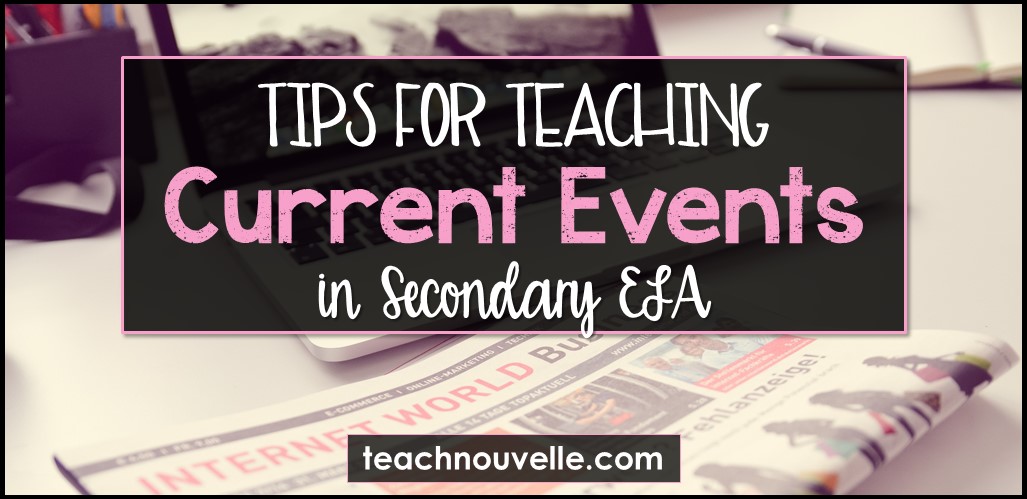
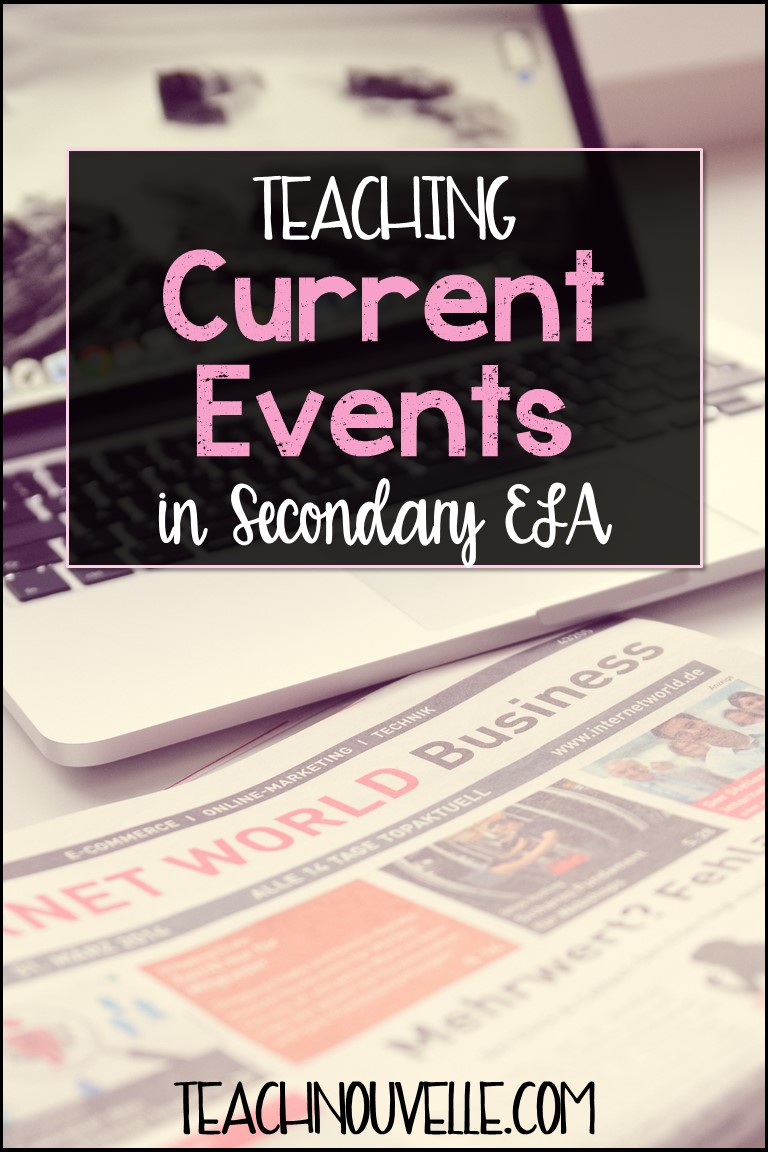
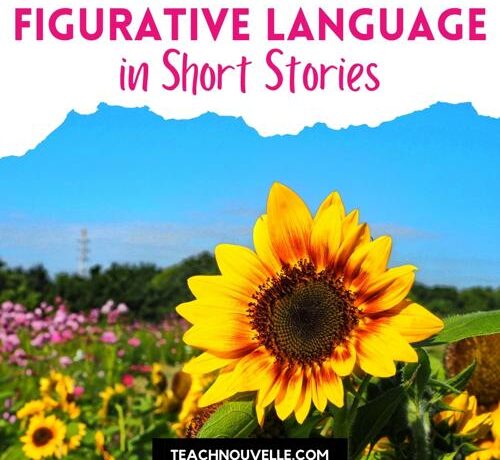
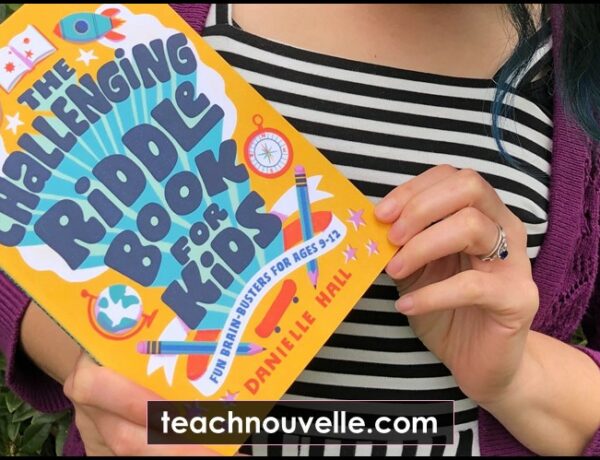
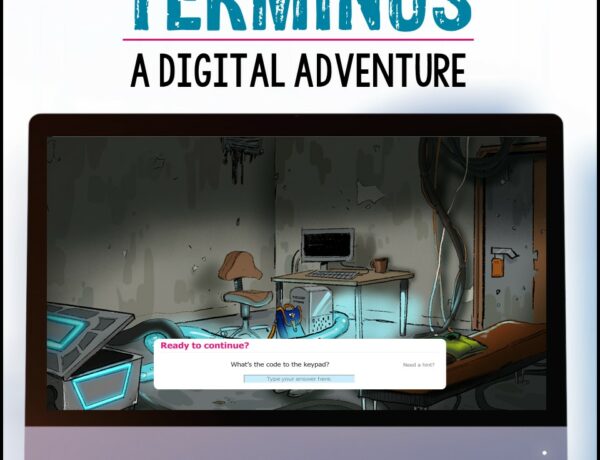
No Comments